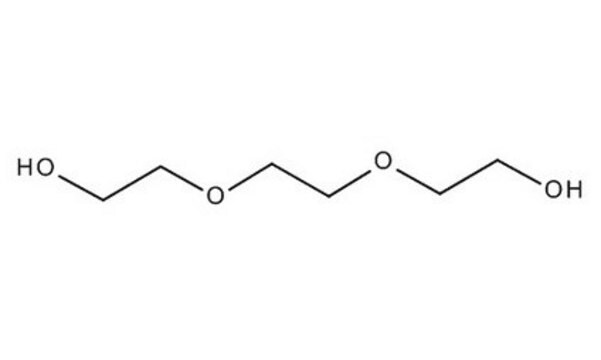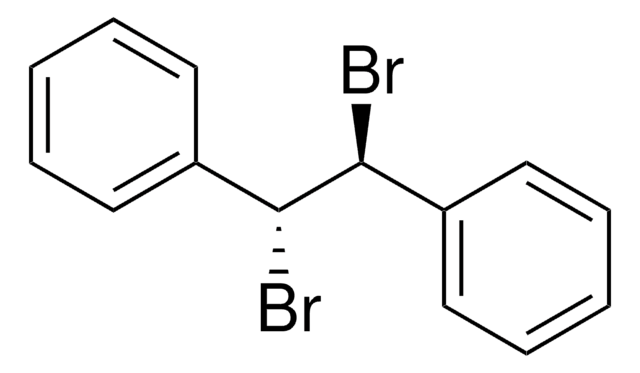95126
Triethylene glycol
BioUltra, anhydrous, ≥99.0% (GC)
Synonym(s):
Triglycol
About This Item
Recommended Products
vapor density
5.2 (vs air)
Quality Level
vapor pressure
<0.01 mmHg ( 20 °C)
product line
BioUltra
Assay
≥99.0% (GC)
form
viscous liquid
autoignition temp.
699 °F
expl. lim.
9.2 %
impurities
insoluble matter, passes filter test
≤0.01% peroxides (as H2O2)
refractive index
n20/D 1.455 (lit.)
n20/D 1.456
pH
5.5-7.0 (25 °C, 50 mg/mL in H2O)
bp
125-127 °C/0.1 mmHg (lit.)
mp
−7 °C (lit.)
solubility
H2O: 50 mg/mL at 20 °C, clear, colorless
density
1.124 g/mL at 20 °C (lit.)
anion traces
chloride (Cl-): ≤50 mg/kg
sulfate (SO42-): ≤50 mg/kg
cation traces
Al: ≤5 mg/kg
As: ≤0.1 mg/kg
Ba: ≤5 mg/kg
Bi: ≤5 mg/kg
Ca: ≤10 mg/kg
Cd: ≤5 mg/kg
Co: ≤5 mg/kg
Cr: ≤5 mg/kg
Cu: ≤5 mg/kg
Fe: ≤5 mg/kg
K: ≤200 mg/kg
Li: ≤5 mg/kg
Mg: ≤5 mg/kg
Mn: ≤5 mg/kg
Mo: ≤5 mg/kg
Na: ≤200 mg/kg
Ni: ≤5 mg/kg
Pb: ≤5 mg/kg
Sr: ≤5 mg/kg
Zn: ≤5 mg/kg
SMILES string
OCCOCCOCCO
λ
50 mg/mL in H2O
UV absorption
λ: 260 nm Amax: ≤0.10
λ: 280 nm Amax: ≤0.05
InChI
1S/C6H14O4/c7-1-3-9-5-6-10-4-2-8/h7-8H,1-6H2
InChI key
ZIBGPFATKBEMQZ-UHFFFAOYSA-N
Looking for similar products? Visit Product Comparison Guide
Application
Disclaimer
Storage Class Code
10 - Combustible liquids
WGK
WGK 1
Flash Point(F)
330.8 °F - closed cup
Flash Point(C)
166 °C - closed cup
Personal Protective Equipment
Certificates of Analysis (COA)
Search for Certificates of Analysis (COA) by entering the products Lot/Batch Number. Lot and Batch Numbers can be found on a product’s label following the words ‘Lot’ or ‘Batch’.
Already Own This Product?
Find documentation for the products that you have recently purchased in the Document Library.
Customers Also Viewed
Protocols
99%; Glycerol, ≥99.5%; Tetraethylene glycol, 99%
Our team of scientists has experience in all areas of research including Life Science, Material Science, Chemical Synthesis, Chromatography, Analytical and many others.
Contact Technical Service








